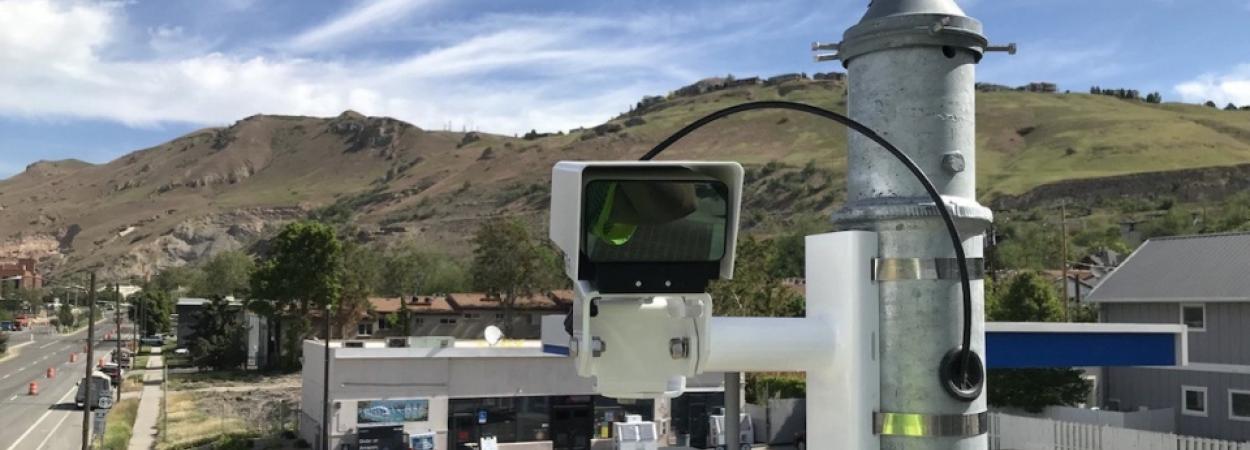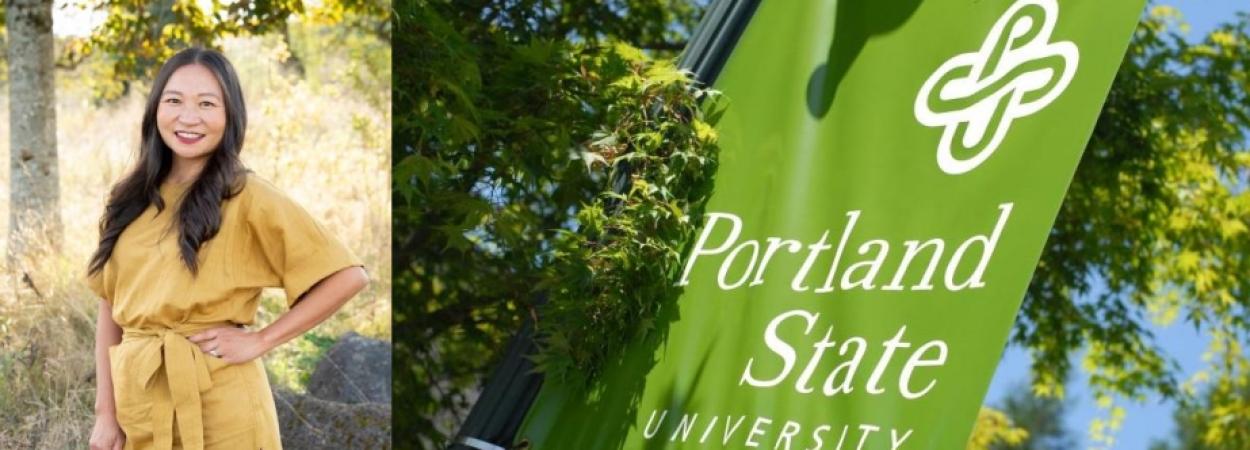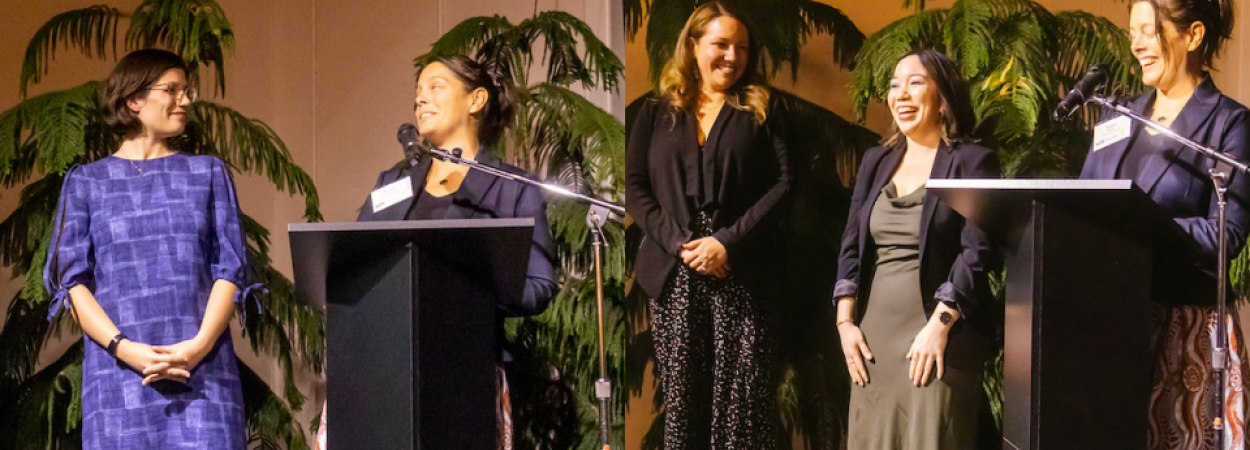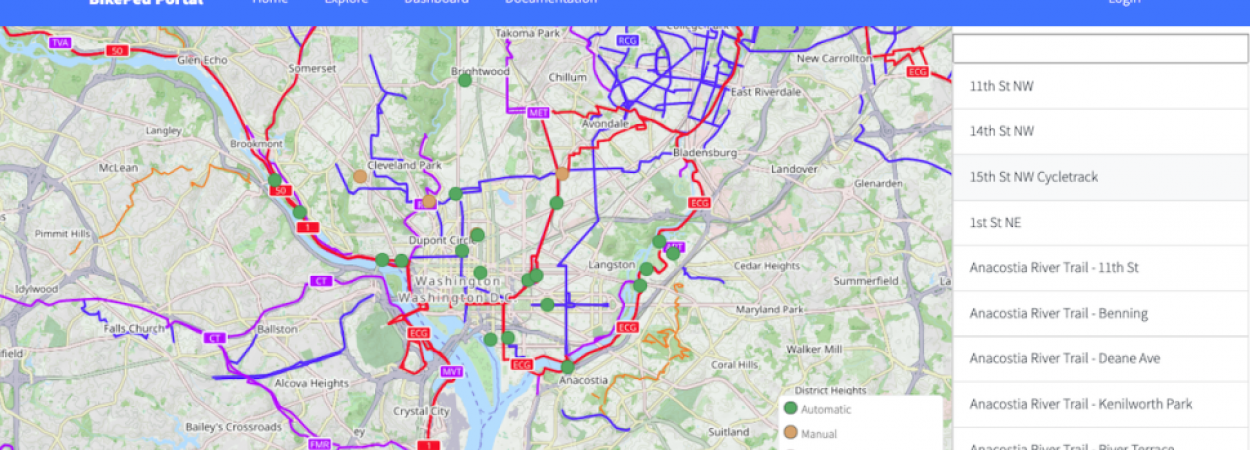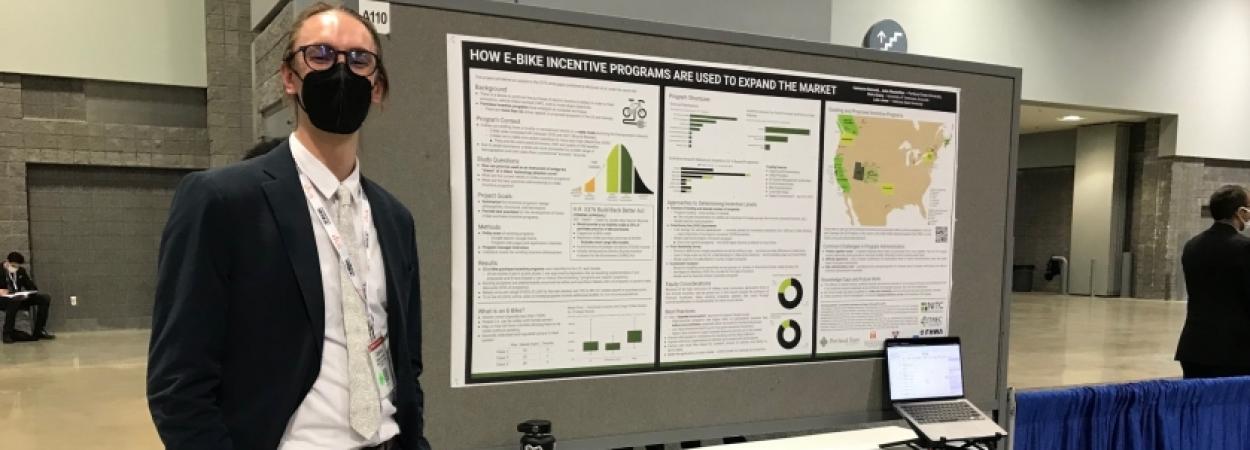Pedestrian safety is critical to improving walkability in cities. To that end, NITC researchers have developed a system for collecting pedestrian behavior data using LiDAR sensors. Tested at two intersections in Texas and soon to be tested at another in Salt Lake City, Utah, the new software created by a multi-university research team is able to reliably observe pedestrian behavior and can help reduce conflicts between pedestrians and vehicles at signalized intersections. The Utah Department of Transportation (UDOT) is already working on implementing this new system to improve data collection at intersections.
Learn more in a free webinar May 18.
The LiDAR system can especially improve multimodal travel at intersections with permissive left turns, which are indicated by a flashing yellow arrow. Previous research has shown that where a flashing yellow arrow, or FYA, is present, cars searching for a gap in traffic may not look for pedestrians. To remove the risk to people walking, some signals are programmed to turn off the FYA when a walk button is pushed. But what if the walk button is pushed and the pedestrian isn't really crossing there, or crosses very quickly and then leaves the crosswalk clear? Left-turning vehicles would still have to wait out the rest of the cycle.
"When crossing an intersection on a diagonal, we find that many people choose to press both walk buttons, and take whichever one changes first. So our solution will check a pedestrian's true intent to cross by tracking this pedestrian’s behavior during yellow, all-red and the first few seconds of green," said the project's principal investigator, Dr. Pengfei (Taylor) Li of the University of Texas at Arlington.
If there is not a pedestrian present, then the FYA can resume so that left-turning vehicles are once again able to turn. It's a way of increasing efficiency and throughput while prioritizing safety.
The research team, led by Li, included graduate students Peirong (Slade) Wang and Farzana Chowdhury of the University of Texas at Arlington; Dr. Sirisha Kothuri and graduate student Katherine Keeling of Portland State University; and Dr. Xianfeng (Terry) Yang of the University of Utah then (currently the University of Maryland). Wang, a PhD candidate, works as a graduate assistant in UTA's ACTION Lab; learn more about him in our March 2023 Student Spotlight. Chowdhury received her PhD from UTA in 2022 and now works as an associate consultant traffic engineer for WSP USA. Keeling received her master's in engineering from PSU in 2022 and is now an operations analyst at TriMet.
TESTING THE SYSTEM
The researchers deployed their LiDAR system at two intersections in Texas:
- Cooper Street at UTA Boulevard, a major intersection connecting two urban campuses of the University of Texas at Arlington with very high pedestrian volumes during semesters.
- West Walnut Hill Lane at North Belt Line Road in Irving, Texas, close to a high school.
While field-testing the LiDAR devices (see a screenshot of the system at left), they conducted two separate studies. The first was a pedestrian behavior study, analyzing things like wait time before crossing, generalized perception-reaction time to the WALK sign, and walking speed. Results reveal that pedestrian behaviors do not always match with the recommendations found in pedestrian facility design guides such as AASHTO’s “Green Book." The study also found that ADA-compliant (audible) pedestrian push buttons can significantly reduce the time it takes for pedestrians to move in response to a WALK signal.
The second study was an exploration of how to separate permissive left-turning vehicles from concurrent crossing pedestrians, using the novel dynamic flashing yellow arrow (D-FYA) solution. The D-FYA solution was also evaluated in a simulation platform, with promising results. It will be evaluated soon at the test intersection in Salt Lake City. The findings of this study will advance the body of knowledge on equitable traffic safety, especially pedestrian safety.
Kothuri, the PSU principal investigator who led the behavior analysis study, has conducted several research studies centered around multimodal data and pedestrian-focused signal timing. She helped to evaluate recorded pedestrian behaviors and to develop the custom software which captures performance measures such as pedestrian crossing time. Dr. Yang has also done extensive work in data-driven mobility strategies for multimodal transportation and connected vehicle systems.
Mark Taylor, a traffic signal operations engineer for the Utah Department of Transportation (UDOT), is optimistic that the new sensor system can offer important functionality based on its improved bicycle and pedestrian detection.
"We have these goals and objectives to make our intersections and our roadways safe, and safer for all modes of travel. Not just vehicles, and not just buses and trucks, but the vulnerable road users as well; bikes as well as pedestrians, and with zero fatalities. The big thing about LiDAR is you're able to get a 3D image of everything around you and what is happening in real time. With this system, you're able to look at things like red light running and near misses for pedestrians and vehicles, and you're able to see a lot more information that the traditional detector is not able to provide you with," Taylor said.
The improved LiDAR sensors could enable UDOT to tailor traffic signals to travelers' needs, potentially adjusting signal timing in real time. The system could also integrate with vehicle-to-infrastructure (V2X) connected vehicle technology.
"We're looking at walking speeds, which means that we are able to provide additional crossing time for slower pedestrians if needed," Taylor said. "We are also looking at the feasibility of taking the location of the pedestrian and broadcasting that location to connected vehicle technology. Just being able to communicate to vehicles that, hey! There is a pedestrian on the corner of the intersection."
Based on this NITC project, UDOT funded another project, "Utilizing LIDAR sensors to detect pedestrian movements at signalized intersections," to deploy the pedestrian tracking system at a test intersection in Salt Lake City. This project is one of three parallel LiDAR-based projects that UDOT is working on, in order to better understand LiDAR sensors' potential to improve traffic operations.
Read more about this research in a new article, "Developing a Tracking-Based Dynamic Flash Yellow Arrow Strategy for Permissive Left-Turn Vehicles to Improve Pedestrian Safety at Intersections," published in the April 2023 issue of the Journal of Transportation Engineering.
This research was funded by the National Institute for Transportation and Communities, with additional support from the City of Arlington, Texas; the Oregon Department of Transportation, the University of Texas at Arlington and the University of Utah.
ABOUT THE PROJECT
Taylor Li, University of Texas Arlington; Sirisha Kothuri, Portland State University; Xianfeng (Terry) Yang, University of Utah
RELATED RESEARCH
To learn more about this and other NITC research, sign up for our monthly research newsletter.
- Development of Intelligent Multimodal Traffic Monitoring using Radar Sensor at Intersections
- Data-Driven Mobility Strategies for Multimodal Transportation
- Connected Vehicle System Design for Signalized Arterials
The National Institute for Transportation and Communities (NITC) is one of seven U.S. Department of Transportation national university transportation centers. NITC is a program of the Transportation Research and Education Center (TREC) at Portland State University. This PSU-led research partnership also includes the Oregon Institute of Technology, University of Arizona, University of Oregon, University of Texas at Arlington and University of Utah. We pursue our theme — improving mobility of people and goods to build strong communities — through research, education and technology transfer.

